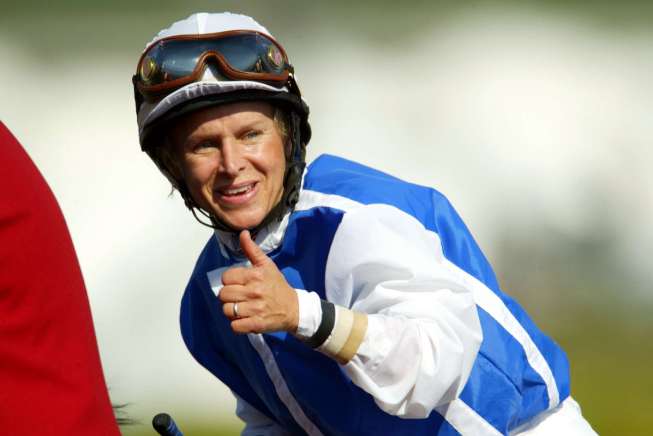Battle for the Saddle takes a look at how female jockeys are revered in countries across the globe, and considers to what extent British racing falls behind in its approach to gender equality.
With the introduction of the Silk Series last year, and the establishment of racing’s first Diversity Steering Group, it seems that British racing is now making moves to address the gender equality gulf in racing.
According to figures published by the British Horse Racing Authority (BHA), only 1% of rides in the top races are taken by females. Below is an analysis at how other countries compare, with a specific look at statistics compiled by the Thoroughbred Racing Commentary Global Jockey Rankings.
AMERICA
A huge racing nation. It would be easy to think that the situation in America is much better than in Britain, given the exploits of Julie Krone and Rosie Napravnik, but that isn’t necessarily the case. Krone broke all gender barriers throughout her glittering career, before becoming the first woman to be inducted into the National Museum and Racing Hall of Fame. Her success should have been the catalyst for a wave of female talent, but that hasn’t quite materialised, particularly in the last few years since Napravnik’s retirement.
A look at the statistics says it all. In July 2017, only 18 women made the top 500 jockeys according to the TRC rankings. Just 3 of those 18 were based in the US.
Krone and Napravnik’s hugely successful careers show that women can go to the very top of American racing when given appropriate opportunities, but those opportunities don’t seem to be reaching the current crop of female riders.

AUSTRALIA
Australian racing and gender equality have gone hand in hand ever since Michelle Payne’s iconic triumph in the 2015 Melbourne Cup aboard 100-1 shot Prince of Penzance. She branded the sport “chauvinistic” in her post race interview, stating that some of the horse’s owners wanted to “kick her off”.
But in the last few years, Australia has become a world leader in promoting female jockeys. Payne’s exploits aside, the 2016/17 season saw three women ride over 100 winners, when only two have done so in the entire history of British racing.
July’s TRC statistics revealed 8 of the 18 female jockeys in the top 500 plied their trade in Australia, including the highest ranked of them all, Katelyn Mallyon.
It may not be an equal game in Australia for some time yet, but it’s certainly going the right way.

NEW ZEALAND
It must be something in the Australasian air, as New Zealand is also miles ahead of Britain in terms of its gender equality in racing.
Its pin up girl, Lisa Allpress, won the jockey’s premiership in 2012, and again in 2015/16, whilst in Britain, no female has come close to winning the jockey’s championship, not even Hayley Turner.
New Zealand is responsible for 5 of the 18 women in the top 500 jockeys, and Samantha Collett currently leads this year’s championshipthis year’s championship. It is also worth noting that Allpress has accumulated over 1000 winners during her career, a feat yet to be achieved by a British female jockey.

JAPAN
In stark contrast to Australia and New Zealand, Japan appears to be by far the worst of the studied nations at reaching equality in racing. In March 2016, Nanaka Fujita became The Japan Racing Association’s first female rider in 16 years.
Japan is not responsible for a single female jockey in the world’s top 100, and currently the most successful female rider in its history, Yukiko Masuzawa, amassed 34 career wins.
Compare that to Britain’s current most successful rider, Josephine Gordon, who rode 106 winners in 2017 alone, and you realise just how far behind Japan is in terms of gender equality in horse racing.

FRANCE
Racing in France has been well and truly under the gender equality spotlight since the inception of a weight allowance for female riders in March 2017. It is far too early to say that the scheme has been a resounding success, and in truth, it may be five or six years before its true effects can be laid bare for all to see, but the initial statistics seem to suggest it has had a positive influence.
A recent review into the scheme found a 165% increase in the number of winners ridden by women, whilst female jockeys also accounted for twice as many rides as during the same studied period in 2016.
The initial results prompted France Galop, the governing body of French Racing, to trim the 2kg allowance to 1.5 kg for females riding in flat races.
It is hoped that this move will not deter owners and trainers from continuing to give female riders increased opportunities, whilst the BHA are monitoring the situation in France closely, and will wait for concrete results before considering implementing a similar initiative in Britain.

What the experts have to say:
CLARE BALDING – “Interestingly in America where generally speaking the riding style isn’t as physically aggressive as it is here and where all the courses are flat, I think it’s much more about timing, and horsemanship as well, but timing is absolutely crucial there. They don’t push their horses around as much as we do.
“In Britain the assumption is women won’t be physically strong enough therefore we won’t give them the opportunity, but it’s alright in America because they don’t ride like Kieran Fallon over there.”
RYAN MOORE – “New Zealand has a very good bloodstock industry but their prize money and class of racing isn’t that high, and a lot of the better jockeys go to Australia.
“Most of the girls that are successful in Australia, okay Michelle Payne won a Melbourne Cup, and they’ll tell you there’s a higher percentage of female jockeys, but that percentage is made up mainly at the lower grade, country tracks. But there are a good handful of females that do ride in the big meetings, probably a similar number to what there is in the UK.
“People will tell you that Australia is more forward, but realistically at the top level, it would be very similar to over here. And
“In America I’d say it’s the same. Julie Krone had great success there, and there are females riding there successfully. Again, maybe it’s not In the biggest races.”
JOSEPHINE GORDON – “I’ve just been over to Keeneland and Switzerland and it was 50/50 girls and boys. It’s just taken a little bit longer to click over here really.”

I do like the way you have presented this particular concern and it really does supply me a lot of fodder for thought. However, because of everything that I have personally seen, I just hope as other remarks pile on that people today stay on issue and don’t embark on a soap box of the news of the day. Anyway, thank you for this outstanding piece and even though I do not really concur with it in totality, I respect the point of view.
LikeLike